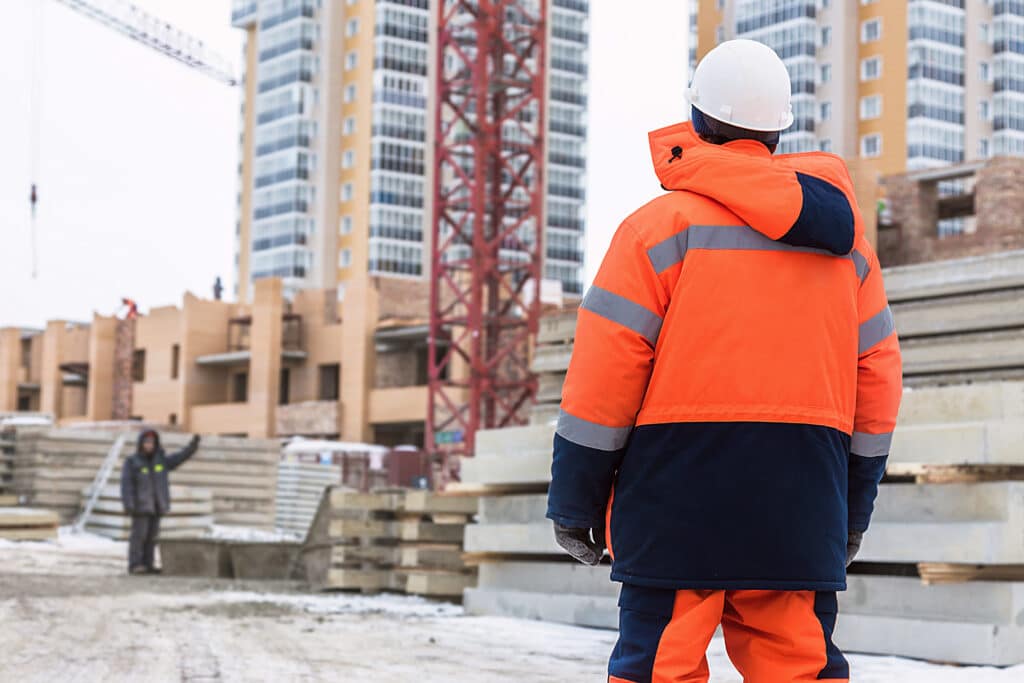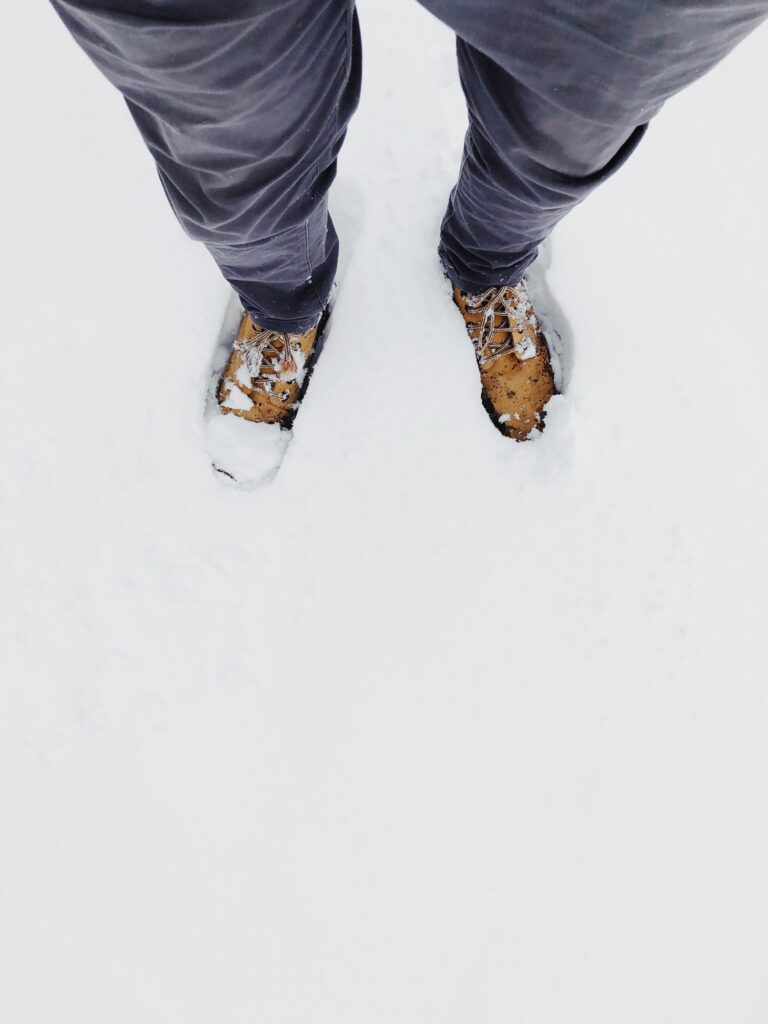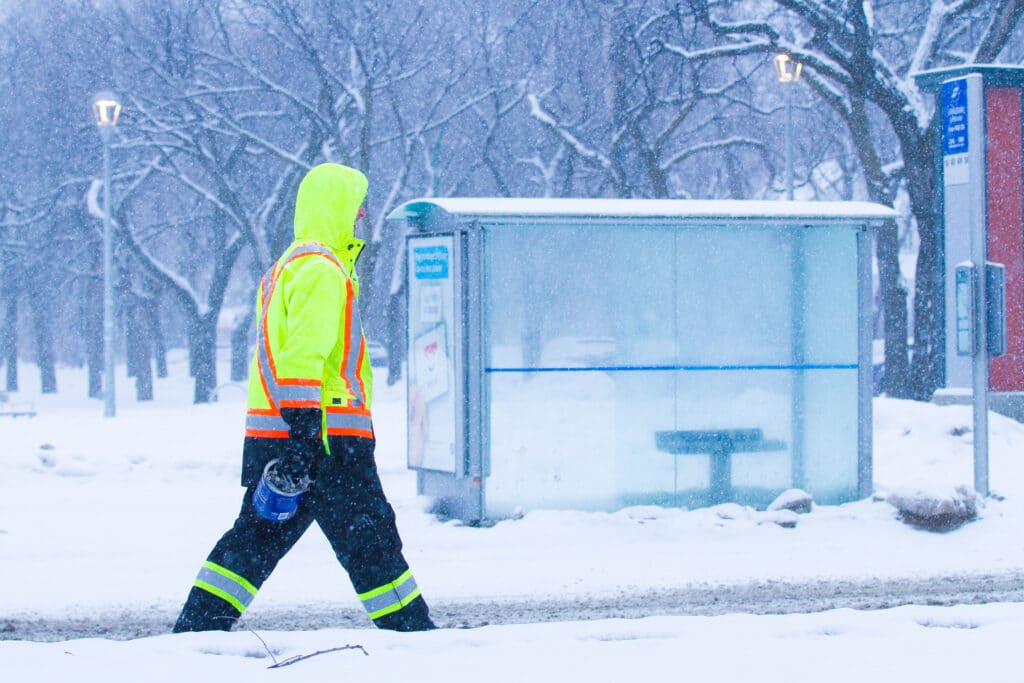
5 Cool-Weather Workwear Must-Haves
With fall in the air, we all know that winter is nearing. The temperatures are dropping and the daylight hours are shrinking. If you do manual labor, you might like the idea of cold weather, but with chillier temps comes increased dangers and risks involved when working outside. In a cold environment, most of the body’s energy is used to keep the internal core temperature warm, and poor preparations can lead to some painful consequences, such as frostbite and hypothermia.
It’s time to get prepared with cold-weather traffic safety equipment and clothing. It is paramount to the success of year-round projects. Help personnel adapt to these environmental changes and keep the projects running without compromising safety. The dangers of cold-weather injuries not only affect those working outdoors but can also hurt those who work in cold storage and food processing services, too.
1. Gloves
Keeping your extremities warm is vital to successful cold-weather working conditions. Durable, protective gloves that don’t hinder your ability to use your hands can help ensure a project’s completion in a safe and timely manner.
When selecting effective gloves, consider the number of layers, their waterproof nature, and whether the gloves are flexible and easy to work in. We all have used poor gloves that are either clumpy or don’t keep our hands warm at all. Properly winterized gloves mitigate against the cold and wet weather.
2. Socks and Boots

It’s not only about being able to comfortably stand on your feet. Some of the most severe cases of frostbite occur when standing in cold, wet conditions. Nothing can be more miserable than cold, wet feet, and if you can keep your feet dry, your work life will be much more enjoyable.
Trust us.
Not only are frozen toes a result of poor waterproofing, but they can also freeze due to non-breathable materials, trapping moisture inside with your feet. Waterproofing and proper insulation are key details when selecting a work boot. As far as socks are concerned, it is critical to ensure your winter work boots are roomy enough for a pair of quality winter socks. Winter socks are thicker by nature and should also be made of breathable materials.
You should also select a boot with a rubber sole and an effective tread to prevent dangerous slips and falls. Most boots come with a temperature and weather rating system to notify you if the boot is right for the conditions you’ll be working in.
3. Neck Gaiters
Keeping your face and neck warm is another way to improve your comfort and effectiveness within the cold outdoors. In a working environment, however, loose clothing like a scarf is a risk to worker safety, as it has dangling edges that can get caught in heavy machinery.
Neck gaiters are a fantastic alternative to the traditional scarf that keeps your neck warm and can securely fit around your mouth. Because of the tube-like shape, they’re not only more form-fitting to the body (making them safer), but neck gaiters are made of breathable, synthetic materials that help keep odor-causing bacteria from settling in between the fibers of the fabric.
There are several brands and variations to this scarf alternative, but the most important things to consider are breathability and looseness – again, if it’s too loose, it could cause unnecessary hazards to you as a worker.
4. Jackets and Coats

Yes, layering with proper base layers clear to the outer core is essential. In cold-weather working environments, however, it’s not only vital to have a quality, durable coat, but workers need to maintain their visibility in a work zone by wearing reflective gear. An effective work coat should get the job done.
Like boots and socks, breathable material is also essential for your main layers in order to regulate your core body temperature. Keep your skin dry and free from moisture from both sweat and outside precipitation. The most effective cold-weather layer materials are form-fitting and made of wool or polyester synthetic materials.
5. Hats
Your head is another extremity that you must keep warm, as a lot of the body’s heat escapes from the top of the head. Make sure your beanie can cover your ears as well – ears are known to be target spots for frostbite.
Not only should your hat be warm, but it should also be thin enough to fit under other safety headgear, such as hard hats and helmets. Ideally, your work-zone hat has reflective material to increase visibility (or is at least a neon color).
Trust Us at Interwest Safety Supply
For over 40 years, Interwest Safety Supply has sought to maintain worker safety through high-quality products. With five dedicated locations, we can serve regions throughout the United States. Find an expert and regional warehouse that services your state today!






